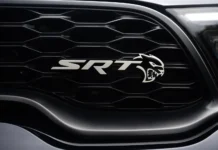The recently-passed U.S. infrastructure bill aims to curb impaired driving with new rules for automakers within the next 3 years.
We’re in for a host of major shifts to infrastructure and vehicles within the next few years, but there’s another issue Congress acted on in the recently passed $1.2 trillion infrastructure bill. A section of the bill, called the Infrastructure Investment and Jobs Act, hones in on drunk driving, and sets out a mandate to the Department of Transportation and manufacturers to stop it within the next five years. At this moment, the bill is not law yet — but President Joe Biden is expected to sign the bill in the coming days.
Specifically, we’re focusing on Section 24220 of the bill, covering “Advanced Impaired Driving Technology”. In essence, Congress is directing automakers to install devices in their new vehicles by 2026 to stop drivers from being able to operate the vehicle if it detects they are impaired by alcohol. The Secretary of Transportation has three years to implement a final rule on the specifics of how cars will passively monitor drivers for intoxication.
Once the Department of Transportation finalizes the rules, automakers will have two more years to comply. In justifying the mandate’s inclusion in the bill, Congress cites NHTSA and IIHS figures, which point to more than 10,000 alcohol-related deaths on American roads in 2019. Of those crashes, more than two-thirds involved drivers with blood alcohol levels above .15, or nearly double the legal limit of .08. IIHS data suggests an advanced monitoring device would cut deaths by 9,400 annually — a reduction over 90%.
What could a system to stop drunk driving in new cars look like?
At the moment, current systems meant to detect distracted drivers, namely infrared cameras, could be used to curb drunk driving as well. It’s not a foolproof solution, as it would still allow drunk drivers to at least start their journeys before the car cuts in. With autonomous tech also improving, this solution could see a short shelf life if drivers are more or less removed from future vehicles entirely. Even so, many would argue that some proactive solution — further steps on in-car breathalyzers that drivers convicted of DUIs have to use — is better than nothing at all.


























